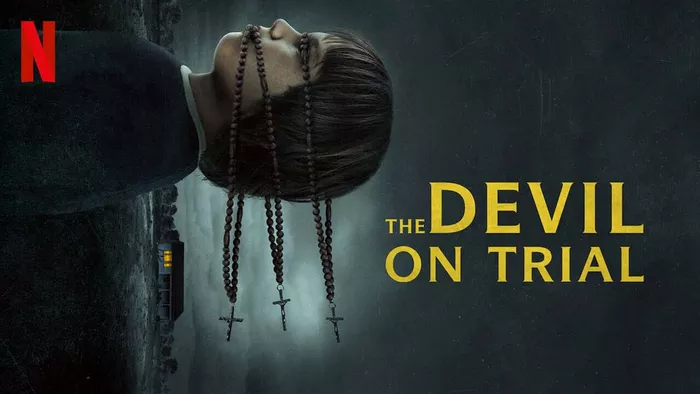In the world of entertainment, the fascination with true crime has grown exponentially, with audiences often captivated by the eerie blend of reality and the supernatural. Netflix’s recent documentary, “The Devil on Trial,” attempts to unravel a harrowing true-crime story. However, critics argue that this narrative was already brought to life with superior finesse in the 2021 box office hit, “The Conjuring: The Devil Made Me Do It.” Delving into the intricate comparison between the documentary and the fictional retelling, it becomes evident that the latter presents a more gripping and immersive portrayal of the events, leveraging the power of fiction to transcend the limitations of reality.
A Fictional Spin on Reality
“The Conjuring: The Devil Made Me Do It” takes inspiration from the same source material as “The Devil on Trial.” It recounts the case of Arne Johnson, who claimed to have been possessed by demonic forces when he committed a heinous crime. However, what sets this adaptation apart is its ability to transform the real-life events into a spellbinding narrative. By infusing the tale with supernatural elements, the film manages to grasp the audience’s attention from the onset, fostering a heightened sense of intrigue and terror that cannot be achieved through a purely factual retelling.
The movie weaves a compelling web of suspense, strategically intertwining the elements of the occult with the raw emotions of the characters. The dark forces at play in “The Conjuring: The Devil Made Me Do It” add a layer of complexity to the story, transcending the boundaries of a mere courtroom drama. The use of spine-chilling visuals and a haunting atmosphere engrosses the audience in a world where the line between the natural and the supernatural blurs, leaving a lasting impression that lingers far beyond the credits.
The Art of Suspense and Spectacle
While “The Devil on Trial” struggles to maintain the same level of engagement, “The Conjuring 3” excels in creating a palpable sense of suspense and fear. Through the careful orchestration of jump scares, eerie sound effects, and masterful cinematography, the film cultivates an environment where every creak and shadow becomes a harbinger of imminent dread. It harnesses the power of visual storytelling, leveraging cinematic techniques to heighten the emotional impact of pivotal moments. From the ominous whispers in the darkness to the spine-tingling apparitions, every element is meticulously crafted to elicit a profound sense of unease within the audience.
The exceptional portrayal of the Warrens, the paranormal investigators central to the narrative, further elevates the film’s appeal. Their dynamic chemistry and unwavering determination to confront the supernatural inject a humanizing element into the story. As the plot unravels, their unwavering belief in the presence of evil forces offers a compelling juxtaposition to the skepticism of the authorities, creating a narrative tension that keeps viewers on the edge of their seats. The film’s ability to seamlessly blend heart-pounding suspense with a touch of emotional depth ensures an immersive experience that resonates long after the final scene fades to black.
Navigating the Boundaries of Reality
One of the significant critiques leveled against “The Devil on Trial” pertains to its emphasis on factual accuracy, which inherently limits the scope of its narrative. While the documentary strives to present an unbiased account of the events, this commitment to accuracy often curtails the creative liberties that could otherwise have heightened the impact of the story. Conversely, “The Conjuring: The Devil Made Me Do It” navigates the boundaries of reality with a delicate balance, intertwining fact with fiction to craft a more evocative and enthralling tale.
By adopting a fictional approach, the film sidesteps the need for meticulous adherence to factual scrutiny, granting the creative team the freedom to delve deeper into the supernatural aspects of the case. This creative liberty not only enriches the storytelling experience but also allows for a more nuanced exploration of the characters’ psychological depths. It provides the filmmakers with the flexibility to delve into the intricate nuances of the human psyche, exploring the profound impact of the supernatural on the protagonists’ lives without being encumbered by the constraints of documented reality.
The Trustworthiness of Characters
Moreover, the fictional approach of “The Conjuring 3” ensures that the trustworthiness of the characters remains intact, unmarred by the need for exhaustive fact-checking. In contrast, “The Devil on Trial” often faces skepticism and scrutiny regarding the reliability of the individuals involved. The documentary’s reliance on factual evidence raises questions about the veracity of the accounts presented, casting a shadow of doubt on the credibility of the characters and their motivations.
“The Conjuring 3” skillfully circumvents this challenge by building a narrative that doesn’t necessitate the same level of scrutiny. By immersing the audience in a fictionalized world, the film fosters a sense of belief in the characters’ experiences, allowing viewers to invest emotionally in the unfolding drama without being burdened by the need to verify every detail. This critical distinction underscores the superior effectiveness of the fictionalized approach, which not only preserves the integrity of the characters but also amplifies the impact of their struggles in the face of supernatural adversity.
Conclusion
In the realm of storytelling, the ability to weave a captivating narrative that transcends the constraints of reality is a hallmark of exceptional craftsmanship. While Netflix’s documentary “The Devil on Trial” strives to offer an authentic portrayal of true events, it pales in comparison to the fictionalized brilliance of “The Conjuring: The Devil Made Me Do It.” By leveraging the power of fiction to delve deeper into the supernatural elements of the case, the film succeeds in creating an immersive experience that resonates with audiences on a visceral level. Through its masterful blend of suspense, spectacle, and a narrative that seamlessly blurs the line between reality and the supernatural, “The Conjuring 3” emerges as a definitive testament to the potency of fictional storytelling in bringing true-crime tales to life.

